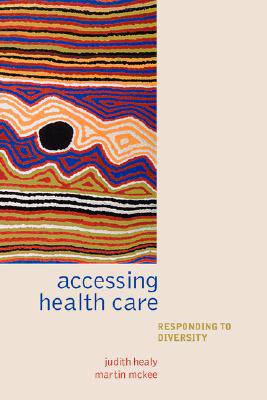
- Retrait gratuit dans votre magasin Club
- 7.000.000 titres dans notre catalogue
- Payer en toute sécurité
- Toujours un magasin près de chez vous
- Retrait gratuit dans votre magasin Club
- 7.000.000 titres dans notre catalogue
- Payer en toute sécurité
- Toujours un magasin près de chez vous
267,95 €
+ 535 points
Description
Health care systems in developed countries must respond to increasingly diverse populations given greater population movements in our globalised world. We all share a common humanity yet we each have different health care needs, depending on whether we are young or old, men or women, rich or
poor, disabled or able-bodied, from different ethnic and indigenous groups, or citizens or asylum-seekers. Our membership of these societal groups shapes to some extent our health needs and our use of health services. But policy -makers and professionals often seem blind to this diversity. Some
groups make special claims upon the state and have different expectation regarding health care. What are the barriers to people receiving equitable health care? Should mainstream services be made more responsive to the needs of different people, or is it necessary to set up alternative health care
services? The chapters in this book discuss countries and population groups that illustrate different responses to claimant groups and different ways of delivering health services.
For the first time this book brings together examples of how to deal with diversity from health systems across the industrialized world. It considers population groups within countries and takes a broad approach in studying inherent population diversity (age, sex) citizen issues (migrants, asylum
seekers) and ethnic and indigenous groups (multiculturalism in the UK, Roma in Europe, New Zealand Maori, Australian Aborigines). It identifies barriers to accessing health care services by diverse populations and cultural groups within different countries and considers the advantages and
disadvantages of different delivery models for different population groups. The book provides an unparalleled breadth of perspectives from which to draw conclusions about how to meet the needs of societies characterised by diversity.
poor, disabled or able-bodied, from different ethnic and indigenous groups, or citizens or asylum-seekers. Our membership of these societal groups shapes to some extent our health needs and our use of health services. But policy -makers and professionals often seem blind to this diversity. Some
groups make special claims upon the state and have different expectation regarding health care. What are the barriers to people receiving equitable health care? Should mainstream services be made more responsive to the needs of different people, or is it necessary to set up alternative health care
services? The chapters in this book discuss countries and population groups that illustrate different responses to claimant groups and different ways of delivering health services.
For the first time this book brings together examples of how to deal with diversity from health systems across the industrialized world. It considers population groups within countries and takes a broad approach in studying inherent population diversity (age, sex) citizen issues (migrants, asylum
seekers) and ethnic and indigenous groups (multiculturalism in the UK, Roma in Europe, New Zealand Maori, Australian Aborigines). It identifies barriers to accessing health care services by diverse populations and cultural groups within different countries and considers the advantages and
disadvantages of different delivery models for different population groups. The book provides an unparalleled breadth of perspectives from which to draw conclusions about how to meet the needs of societies characterised by diversity.
Spécifications
Parties prenantes
- Auteur(s) :
- Editeur:
Contenu
- Nombre de pages :
- 400
- Langue:
- Anglais
Caractéristiques
- EAN:
- 9780198516187
- Date de parution :
- 01-02-04
- Format:
- Livre relié
- Format numérique:
- Genaaid
- Dimensions :
- 236 mm x 163 mm
- Poids :
- 693 g







